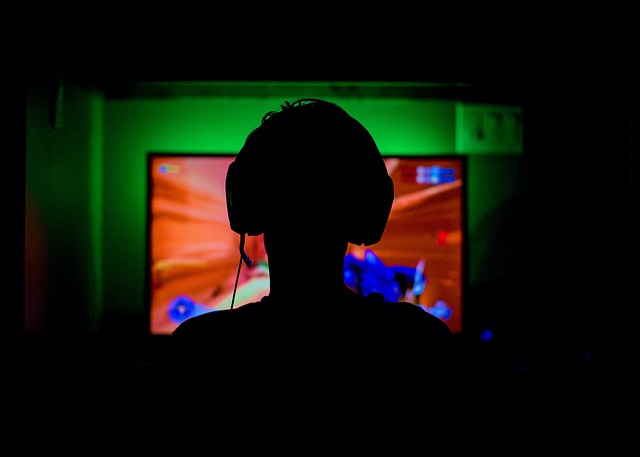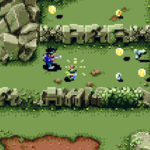Early Development and Inspiration
“Minecraft” is a sandbox video game created by Markus Persson, also known as Notch. The game’s development began in May 2009, and it was publicly released on May 17, 2009. Markus Persson was inspired by several games, including “Dwarf Fortress,” “Dungeon Keeper,” and “Infiniminer.” The latter, in particular, had a significant influence on the blocky, voxel-based aesthetic of “Minecraft.”
Notch developed the initial version of “Minecraft” as a solo project, focusing on a game that allowed players to explore, gather resources, craft items, and build structures in a procedurally generated world. The game emphasized creativity and exploration, providing a sandbox environment where players could shape the world around them.
Evolution and Release
The early version of “Minecraft” gained attention quickly within the gaming community due to its unique concept and open-ended gameplay. Notch continued to update the game, adding new features, mechanics, and content based on player feedback.
In December 2010, Jens Bergensten, also known as Jeb, joined Mojang, the company founded by Markus Persson. Jeb eventually took over the lead development of “Minecraft,” allowing Notch to focus on other projects. The game’s full release occurred on November 18, 2011, during MineCon 2011.
Since its release, “Minecraft” has become one of the best-selling video games of all time, with a large and active player base. The game has expanded to various platforms, including PC, consoles, and mobile devices. Mojang, the development studio behind “Minecraft,” was acquired by Microsoft in 2014 for $2.5 billion.
Key Features of Minecraft
Procedurally Generated World: The game world is generated using algorithms, ensuring each player’s experience is unique.
Voxel-Based Graphics: The distinctive blocky, pixelated art style of “Minecraft” contributes to its charm and simplicity.
Survival and Creative Modes: Players can choose between survival mode, where they must gather resources and manage health, and creative mode, which allows unlimited resources and the ability to build freely.
Crafting and Building: The core gameplay involves gathering materials and crafting tools, weapons, and structures.
Multiplayer: Players can join servers and collaborate or compete with others in shared worlds.
Modding Community: “Minecraft” has a robust modding community that creates custom content, adding new
dimensions, items, mechanics, and game modes.
How to Create a Game Similar to Minecraft
Creating a game similar to “Minecraft” involves a mix of design, programming, art, and sound. Here’s a step-by-step guide to help you develop a voxel-based sandbox game.
1. Concept and Design
Game Concept:
Define the core gameplay mechanics: open-world exploration, resource gathering, crafting, and building.
Decide on game modes (e.g., survival, creative) and additional features (e.g., multiplayer, modding support).
Game Design Document:
Create a detailed design document outlining the game’s features, mechanics, and goals.
Include descriptions of resources, crafting recipes, biomes, and creatures.
Prototyping:
Develop a basic prototype to test core mechanics and gameplay.
Use simple assets and focus on functionality.
2. Development Tools and Technologies
Game Engine:
Choose a game engine suitable for voxel-based games. Popular choices include Unity and Unreal Engine.
Both engines support 3D graphics and offer tools for procedural generation and modding.
Programming Languages:
Unity uses C# for scripting.
Unreal Engine uses C++ and its visual scripting system, Blueprints.
Voxel Libraries:
Consider using voxel libraries like Voxel Farm, PolyVox, or custom solutions to handle voxel rendering and manipulation.
Version Control:
Use a version control system like Git to manage your project files and collaborate with team members.
3. Core Mechanics and Features
Procedural World Generation:
Develop algorithms to generate terrain, biomes, and structures procedurally.
Use noise functions (e.g., Perlin noise, Simplex noise) to create natural-looking landscapes.
Voxel System:
Implement a voxel-based rendering system to display the world as blocks.
Optimize rendering to handle large worlds and ensure smooth performance.
Player Movement and Controls:
Implement smooth and responsive player controls for movement, jumping, and interacting with the world.
Include features like sprinting, swimming, and climbing.
Resource Gathering and Crafting:
Create a system for players to gather resources (e.g., mining, chopping trees).
Develop a crafting system with recipes for tools, weapons, and structures.
Building and Construction:
Allow players to place and remove blocks to build structures.
Implement features like gravity for specific blocks (e.g., sand, gravel) to enhance realism.
Survival Mechanics:
Add survival elements such as health, hunger, and stamina.
Include threats like hostile creatures, environmental hazards, and resource scarcity.
Multiplayer Support:
Implement networking to allow players to join and interact in shared worlds.
Consider features like player-hosted servers, dedicated servers, and in-game chat.
4. Maps and Level Design
Map Creation:
Design and create diverse biomes with unique resources, creatures, and challenges.
Use procedural generation to create vast and varied worlds.
Balancing:
Test and iterate on the world generation algorithms to ensure balanced gameplay.
Adjust resource distribution, biome placement, and creature behavior for a cohesive experience.
5. Art and Sound
Graphics and Assets:
Create or acquire 3D models for blocks, items, creatures, and environments.
Develop textures, animations, and visual effects to enhance the game’s aesthetic.
Sound Design:
Record or source sound effects for actions like mining, crafting, and combat.
Include ambient sounds and background music to create an immersive atmosphere.
User Interface (UI):
Design a clean and intuitive UI for menus, inventory management, and in-game information.
Include elements like health bars, hunger meters, and crafting grids.
6. Testing and Iteration
Playtesting:
Conduct regular playtesting sessions to gather feedback and identify issues.
Focus on gameplay balance, bugs, and overall player experience.
Iteration:
Continuously refine and improve the game based on feedback.
Adjust mechanics, world generation, and features to ensure a polished final product.
7. Deployment and Community Engagement
Publishing:
Choose a distribution platform (e.g., Steam, Epic Games Store, Itch.io) to release your game.
Prepare marketing materials, such as trailers and screenshots, to promote the game.
Community Engagement:
Build and maintain a community around your game through social media, forums, and updates.
Encourage player feedback and support modding to extend the game’s lifespan.
Conclusion
Creating a game similar to “Minecraft” is a complex and ambitious project, but with careful planning, dedication, and a clear vision, it is achievable. By understanding the core mechanics and features that made “Minecraft” successful, you can develop a voxel-based sandbox game that captures the essence of what makes these games compelling. Remember to focus on creativity, community engagement, and continuous improvement to create a game that resonates with players and stands the test of time.








